Biomarker identification associated with M2 tumor-associated macrophage infiltration in glioblastoma
- PMID: 40438577
- PMCID: PMC12117037
- DOI: 10.3389/fneur.2025.1545608
Biomarker identification associated with M2 tumor-associated macrophage infiltration in glioblastoma
Abstract
Purpose: M2 phenotype tumor-associated macrophages (TAMs) can promote tumor growth, invasion, chemotherapy resistance and so on, leading to malignant progression. The aim of this study was to identify novel prognostic profiles in glioblastoma (GBM) by integrating single-cell RNA sequencing (scRNA-seq) with bulk RNA-seq.
Methods: We identified M2-associated genes by intersecting TAM marker genes derived from scRNA-seq with macrophage module genes from WGCNA RNA-seq data. Prognostic M2 TAM-related genes were determined using univariate Cox and LASSO regression analyses. In the following steps, prognostic characteristics, risk groups, and external validation were constructed and validated. The immune landscape of patients with GBM was examined by evaluating immune cells, functions, evasion scores, and checkpoint genes.
Results: Analysis of scRNA-seq and bulk-seq data revealed 107 genes linked to M2 TAMs. Using univariate Cox and LASSO regression, 16 genes were identified as prognostic for GBM, leading to the creation and validation of a prognostic signature for GBM survival prediction.
Conclusion: Our findings reveal the immune landscape of GBM and enhance understanding of the molecular mechanisms associated with M2 TAMs.
Keywords: glioblastoma; immune landscape; prognostic signature; single cell; tumor-associated macrophage.
Copyright © 2025 Li, Yu, Li, Yan, Yang and Liu.
Conflict of interest statement
The authors declare that the research was conducted in the absence of any commercial or financial relationships that could be construed as a potential conflict of interest.
Figures

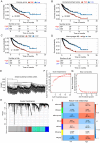
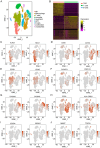
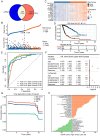
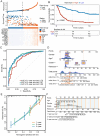


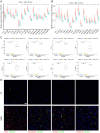
Similar articles
-
M2-like tumor-associated macrophage-related biomarkers to construct a novel prognostic signature, reveal the immune landscape, and screen drugs in hepatocellular carcinoma.Front Immunol. 2022 Sep 13;13:994019. doi: 10.3389/fimmu.2022.994019. eCollection 2022. Front Immunol. 2022. PMID: 36177006 Free PMC article.
-
Comprehensive scRNA-seq analysis to identify new markers of M2 macrophages for predicting the prognosis of prostate cancer.Ann Med. 2024 Dec;56(1):2398195. doi: 10.1080/07853890.2024.2398195. Epub 2024 Sep 2. Ann Med. 2024. PMID: 39221762 Free PMC article.
-
Development and validation a prognostic model based on natural killer T cells marker genes for predicting prognosis and characterizing immune status in glioblastoma through integrated analysis of single-cell and bulk RNA sequencing.Funct Integr Genomics. 2023 Aug 31;23(3):286. doi: 10.1007/s10142-023-01217-7. Funct Integr Genomics. 2023. PMID: 37650991
-
Comprehensive analysis of scRNA-Seq and bulk RNA-Seq reveals dynamic changes in the tumor immune microenvironment of bladder cancer and establishes a prognostic model.J Transl Med. 2023 Mar 27;21(1):223. doi: 10.1186/s12967-023-04056-z. J Transl Med. 2023. PMID: 36973787 Free PMC article.
-
Expression of hub genes of endothelial cells in glioblastoma-A prognostic model for GBM patients integrating single-cell RNA sequencing and bulk RNA sequencing.BMC Cancer. 2022 Dec 6;22(1):1274. doi: 10.1186/s12885-022-10305-z. BMC Cancer. 2022. PMID: 36474171 Free PMC article.
References
LinkOut - more resources
Full Text Sources

